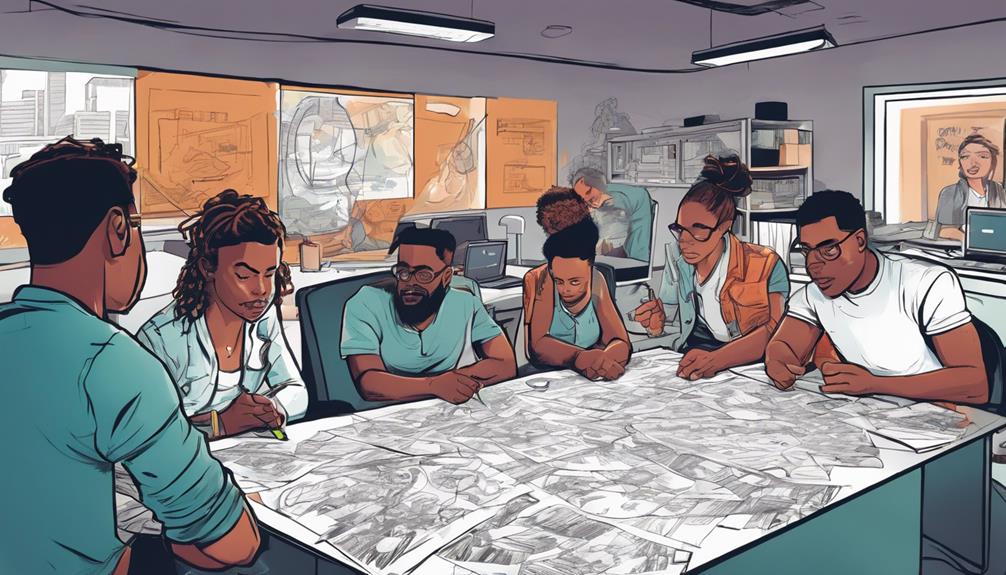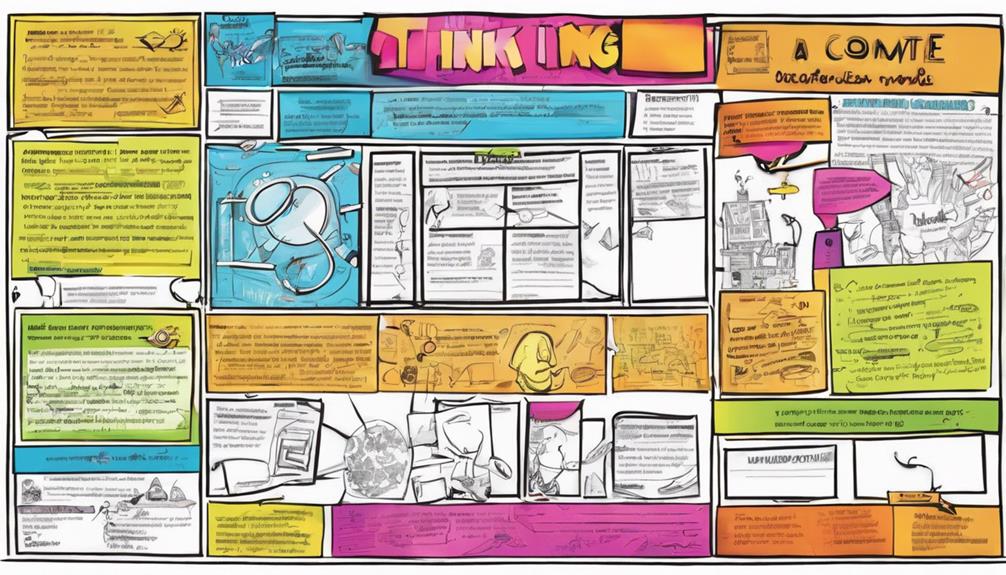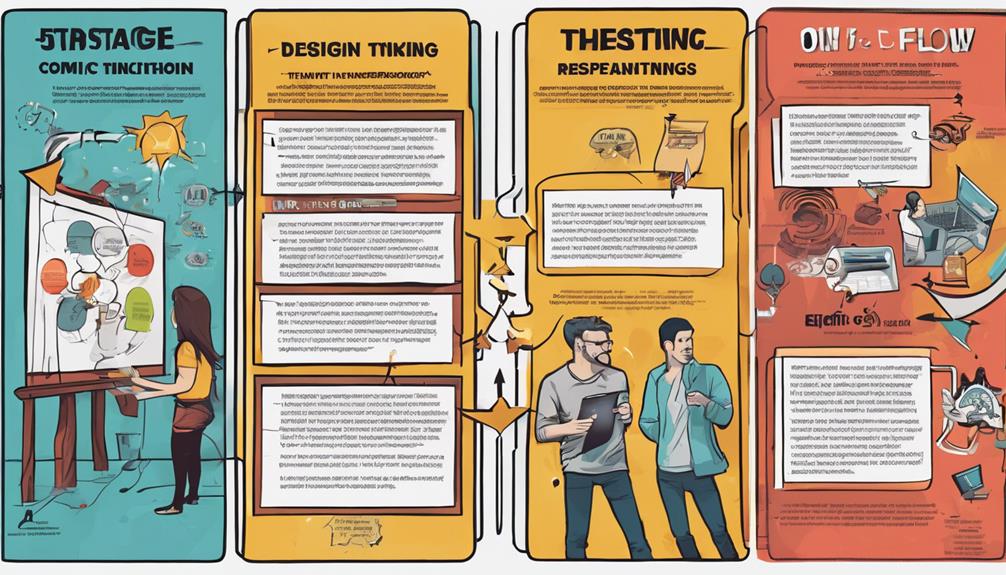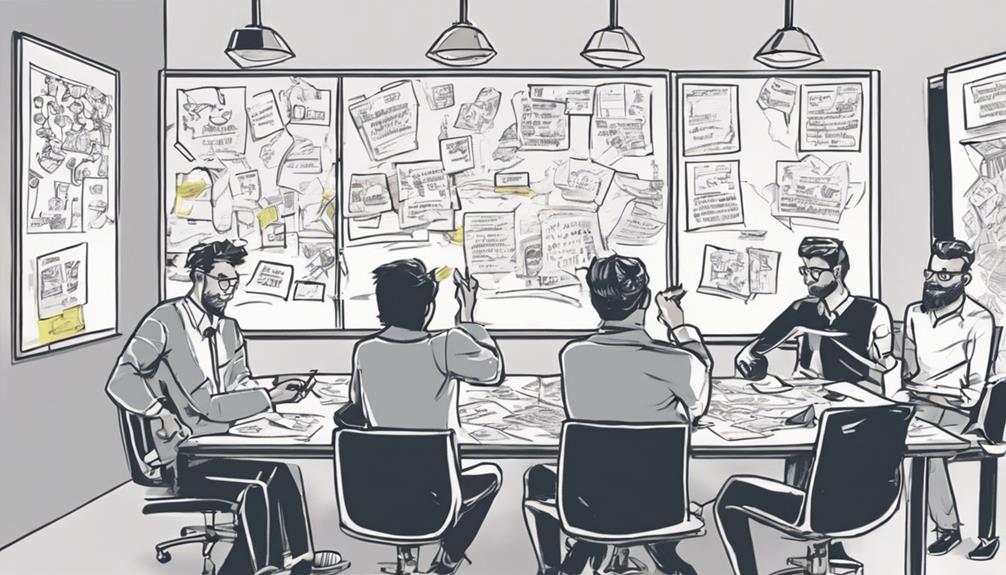Embark on the ultimate design challenge where you innovate! Create sustainable, user-centric solutions for versatile dining tables and stain-resistant covers. Address space, upkeep, and lifestyle needs efficiently. Visualize ideas, gather feedback, and refine concepts effectively through trial and error. Customize products for various user requirements, focusing on strength and flexibility. Explore upcoming trends like height adjustments and automation for improved functionality. Material innovation and continuous learning are keys to success. Ready to tackle the challenge and unleash your creativity?
Key Takeaways
- Utilize iterative processes for innovative solutions.
- Empathize with users to understand needs and pain points.
- Prototype and test designs for user feedback.
- Incorporate customization and multi-functionality.
- Embrace material innovation and design thinking principles.
Understanding the Design Challenge
To understand the Design Thinking Challenge, focus on the innovative solutions needed for flexible dining tables and stain-free covers. The challenge demands an iterative process, where participants must address core space, maintenance, and lifestyle needs in their designs.
This iterative process involves creating sustainable furniture solutions that are easy to clean and cater to user-centric solutions. The prototypes should emphasize stability, build quality, and multi-purpose utility to effectively meet the challenge requirements.
It's essential to contemplate the compactness and ease of movement of the products while ensuring they solve the root problems efficiently. By engaging in this iterative process, participants can develop designs that not only meet the challenge criteria but also push the boundaries of innovation in furniture solutions.
The focus on user needs, sustainability, and practicality drives the iterative nature of the design process, encouraging participants to refine and improve their solutions continuously.
Applying the Design Thinking Framework
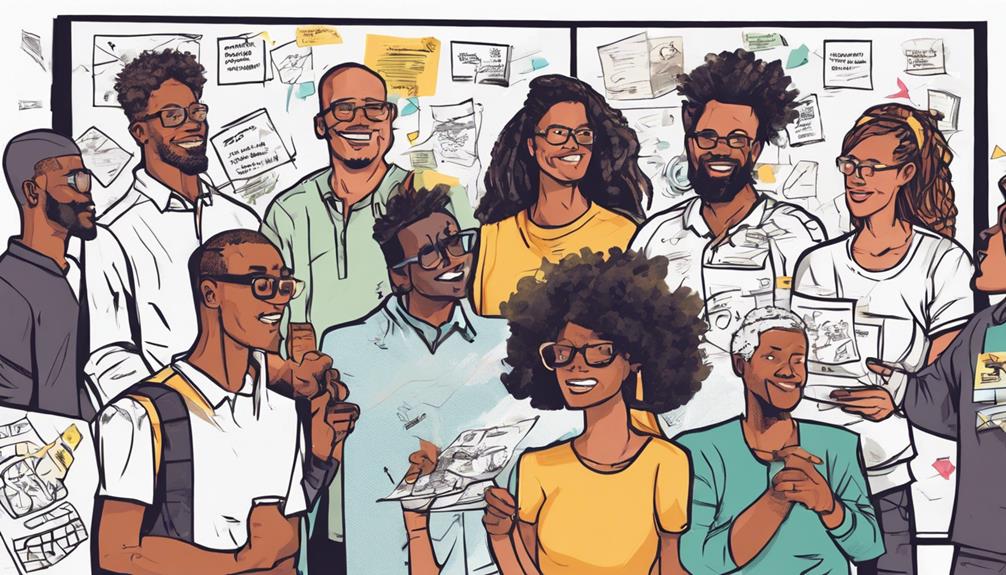
You'll explore the vital steps of empathizing with users, ideating for innovation, and testing prototypes efficiently in the design thinking process.
By understanding user needs and perspectives, you can develop creative solutions that truly address their pain points.
Testing prototypes allows you to gather valuable feedback and refine your designs to guarantee user satisfaction.
Empathizing With Users
Understanding user emotions and motivations is crucial in applying the Design Thinking Framework's Empathizing With Users stage. Design Thinking emphasizes creating solutions that meet user needs effectively.
During the empathize stage, it's crucial to explore users' motives, pain points, and opportunities in their interactions. This process enables designers to gather valuable insights that inform design decisions.
Efficiently conducting user interviews and observations requires proper planning and setting timelines. By empathizing with users, you gain a deep understanding of their perspectives, which forms the basis for defining design problems.
This empathetic approach sets the stage for ideation and prototyping, leading to innovative solutions that resonate with users.
Ideation for Innovation
Exploring creative solutions through brainstorming plays a pivotal role in advancing the Design Thinking Framework and fostering innovation. During the brainstorming stage, the focus lies on generating diverse ideas to address the problem statement effectively. By creating a judgment-free environment, teams can generate a wide array of innovative concepts that cater to user needs and pain points. Brainstorming sessions are instrumental in helping teams investigate various perspectives, leading to the creation of unique solutions.
Moreover, the ideas derived from brainstorming serve as the foundation for prototyping and subsequent testing. This practical validation process ensures that the proposed solutions are feasible and align with user expectations. Effective brainstorming within the design thinking process ultimately results in the development of products that aren't only innovative but also user-centric, meeting the demands of the market successfully.
Testing Prototypes Efficiently
Testing prototypes effectively within the Design Thinking Framework involves iteratively gathering user feedback to refine solutions for best user-centered outcomes.
When testing prototypes, remember the following key points:
- Iterative Process: Testing prototypes isn't a one-time event but a continuous cycle of gathering feedback, refining designs, and retesting.
- Validation of Ideas: Efficient testing helps in quickly validating concepts, reducing the risk of investing in ideas that mightn't resonate with users.
- User Preferences: Through testing, you can identify user preferences, pain points, and behaviors to create solutions that truly meet their needs.
- Risk Reduction: Testing early and frequently helps in minimizing the chances of major failures down the line by addressing issues promptly.
- User-Centered Solutions: By applying the design thinking framework, prototypes are developed with a focus on user needs, ensuring practical and economically viable outcomes.
Importance of Prototyping and Testing

Prototyping and testing are vital steps in the design process, providing valuable insights and minimizing risks for businesses.
When you prototype using different materials, digital tools, or methods, you can quickly visualize and test your ideas to see how they resonate with users.
By testing these prototypes, you gather feedback that helps you understand user expectations and identify areas for improvement in your design solutions.
This iterative process allows you to address potential issues early on, reducing the risk of failure down the line.
Through trial and error, innovation flourishes, and prototyping serves as an essential tool for refining your concepts effectively.
Embracing design thinking means embracing an iterative approach, where prototyping and testing play a pivotal role in continuously enhancing the quality of your products and services.
Crafting User-Centric Design Solutions

To craft user-centric design solutions effectively, prioritize addressing core space and maintenance issues with products like flexible dining tables and stain-resistant covers.
When designing for users, it's essential to gather feedback from Users to understand their needs and preferences.
Here are some key points to keep in mind:
- Feedback Loop: Establish a continuous feedback loop with users to refine design solutions based on their input.
- Customization Options: Offer customization options to cater to diverse user requirements and preferences.
- Durability and Longevity: Focus on creating long-lasting products with a long lifespan to guarantee user satisfaction and sustainability.
- Multi-functionality: Design products with multiple functions to maximize utility and adaptability to different user scenarios.
- Adaptability: Make sure that design solutions can adapt to changing user needs and market trends to stay relevant and desirable.
Embracing the Iterative Design Process

Embrace the iterative design process by incorporating user feedback to refine and enhance product prototypes effectively.
During idea generation, creating prototypes, testing them with users, and iterating based on feedback are essential steps. User insights play a pivotal role in making incremental adjustments to prototypes, ensuring that the final product meets user needs and preferences.
Iterative design allows for continuous improvement and evolution of products. By embracing this process, designers can fine-tune products to be stable, high-quality, and versatile.
Through multiple iterations, products can adapt to changing market trends and user requirements effectively.
Exploring Future Scope and Learnings

As you explore the future scope and learnings in design thinking, consider the potential of incorporating height adjustment and automation for enhanced functionality.
Discover how utilizing stainless steel can reduce product weight, promoting portability and user-friendliness.
Embrace a mindset of continuous learning to stay abreast of evolving design trends and guarantee your solutions remain relevant and successful in the market.
Future Design Trends
Exploring the future scope of design trends reveals potential advancements in height-adjustable furniture features and automation integration. As designers, staying ahead of the curve is important to meet evolving market demands.
To tackle the challenge of predicting future design trends effectively, consider the following key points:
- Height Adjustment Innovations: Enhancements in adjustable furniture will cater to diverse user needs and ergonomic requirements.
- Automation Integration: Integrating automation technology will offer convenience and efficiency in everyday product usage.
- Essence of Design Thinking: Grasping the core principles of design thinking is necessary to drive innovation and creativity.
- Adapting to Changing Needs: Flexibility in adapting products to shifting user preferences ensures sustained relevance in the market.
- Continuous Learning: Embracing ongoing learning and development is essential for personal and professional growth in design thinking practices.
Material Innovation
Innovative material choices will drive future advancements in product design, impacting performance and user experience greatly.
Implementing materials like stainless steel can lead to a significant reduction in product weight, enhancing portability and usability for consumers.
Looking ahead, the future scope of material innovation involves incorporating features such as height adjustment and automation to meet the evolving needs of users in a dynamic market landscape.
To excel in this domain, designers must fully grasp the essence of design thinking, allowing them to innovate and adapt swiftly to changing trends and user preferences.
Continuous learning and development in design thinking are essential for designers to remain relevant and competitive in the industry.
Material innovation stands at the forefront of enhancing product performance, durability, and overall user experience, making it a crucial aspect of design thinking strategies moving forward.
Continuous Learning Mindset
To excel in design thinking, embrace a continuous learning mindset for ongoing innovation and problem-solving in the dynamic design landscape. Design thinking is an iterative process that requires constant evolution and enhancement.
Here are some key points to take into account:
- Future Scope: Incorporate features like height adjustment and automation to enhance product functionality.
- Material Innovation: Implement stainless steel material to reduce product weight, making it more portable and user-friendly.
- Essence of Design Thinking: Focus on understanding the core principles of design thinking to drive innovation and problem-solving.
- Adapting to User Needs: Ensure products are adapted to changing user requirements and market trends for relevance and longevity.
- Continuous Learning: Continuous development in design thinking is essential for staying ahead in the rapidly evolving design landscape.
Conclusion and Call to Action

As a designer, you're urged to embrace continuous learning and adaptation in design thinking to remain innovative and responsive to evolving user needs and market dynamics.
It makes sense to constantly seek ways to improve and stay relevant in the ever-changing landscape of design.
The conclusion of the design thinking challenge emphasizes the importance of being adaptable to shifting user preferences and market trends.
Moving forward, incorporating features like height adjustment and automation can greatly enhance product functionality.
Additionally, utilizing stainless steel material for products can decrease weight while boosting durability.
To achieve successful design outcomes, designers should prioritize user-centric solutions, sustainable practices, and efficient prototyping.
By focusing on these aspects, you can ensure that your designs not only meet but exceed user expectations.
Embracing these principles won't only lead to innovative solutions but also help in creating products that resonate with users and stand the test of time.
Frequently Asked Questions
Can Design Thinking Solve All Problems?
Design thinking isn't a universal fix, but it's a potent tool for tackling various issues creatively. By centering on user needs and iterative problem-solving, it provides a structured approach to understanding and resolving complex problems.
How to Solve Design Challenges?
To solve design challenges, start by understanding user needs and pain points. Use the five stages of design thinking to guide you through problem-solving. Prototype, test, and iterate based on feedback for continuous improvement.
What Is the Ultimate Goal of the Design Thinking Process?
In design thinking, your ultimate goal is to create innovative solutions by understanding user needs, redefining problems, and generating creative ideas. Through empathy, ideation, prototyping, and testing, you iteratively refine solutions for best design outcomes.
Does Design Thinking Really Work?
Design thinking really works by fostering innovation, increasing revenue, and market share. Companies like Apple and Google have successfully implemented its principles. By focusing on human needs and empathy, design thinking helps solve complex problems effectively.
Conclusion
So, can you solve the ultimate design challenge?
By applying the design thinking framework and embracing an iterative process, you can craft user-centric solutions that address complex problems.
Remember, prototyping and testing are key steps in the design process.
Keep pushing boundaries, exploring new ideas, and never stop learning.
The journey may be challenging, but the rewards of innovative design solutions are worth it.
Start now and see where your creativity takes you!

